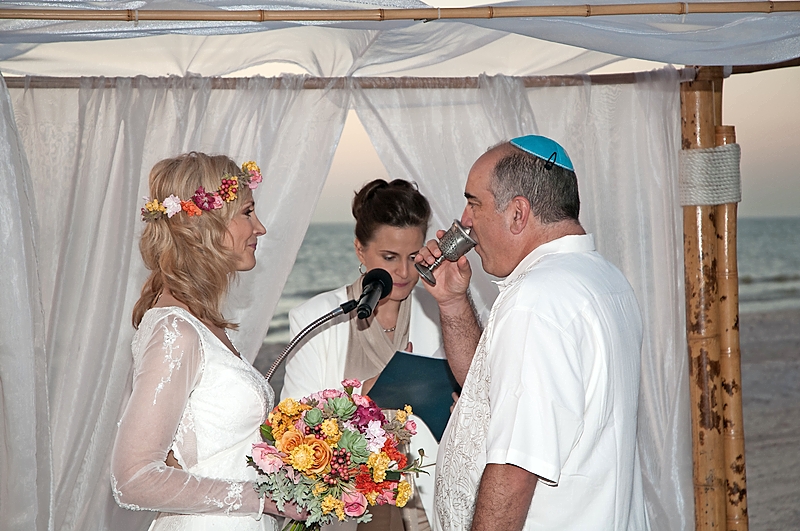Break with Tradition
By Rachelle Stoller
April 2017 View more Featured

Wedding ceremonies and celebrations have always been full of tradition, regardless of the heritage and culture the bride and groom bring to their union. Today’s couples are finding new ways to make traditional customs even more meaningful to them and their cultural heritage by refining diverse customs for truly personal experiences.
Blending cultures
Wedding traditions also can be a celebration of two cultures coming together, as is the case for Sunita Rao and Alexander Fogt of Woodridge. The two met at Downers Grove South High School and dated for nearly nine years before marrying at NOAH’s Event Venue of Naperville. They honored Rao’s Indian heritage with a traditional Hindu wedding ceremony in the morning. Normally a three- to five-day affair, the couple condensed the ceremony into two hours and included the lighting of the holy fire, or vivaah homa, and the seven vows, or pheras, where they held hands and made seven circles around the fire together.
“It signified the blessing of us and living our lives together,” remarks Rao.
Both Rao and Fogt wore traditional Indian wedding garb and then changed into a gown and tuxedo for the spiritual ceremony that evening.
The reception was a mix of cultures as well, with all the traditional American wedding practices and a special treat for their guests. A Bollywood dance instructor was on hand to teach guests authentic Indian dance moves, to everyone’s delight.
“The Bollywood instructor was the highlight of our reception,” Rao recalls. “My friends still talk about it.”

A change of scenery
When Elmhurst’s Mark Heisler and Jamie Cosnowsky were wed, they embraced a traditional Jewish ceremony with their own personal touches.
Cosnowsky’s sister, who is the senior rabbi at Congregation Etz Chaim in Lombard, introduced the couple. Both Heisler and Cosnowsky had been previously married in traditional Jewish weddings. For their ceremony, however, they wanted to make those traditions their own.
With Cosnowsky’s sister presiding, the couple was married on Florida’s Indian Shores Beach with seventeen of their closest family and friends. “We took all of the best parts of a traditional Jewish wedding ceremony and made them ours,” Heisler says.
The couple was married under a chuppah, a canopy that represents the new Jewish home being created by the marriage. They each placed a gold ring on each other’s index finger, a tradition that binds couples by the vein that originates in that finger and extends directly to the heart. And they were wrapped in Heisler’s prayer shawl to symbolize their bond together.
One tradition that the couple personalized was the circling ceremony. Traditionally, the bride makes seven circles around her groom after stepping under the chuppah—to symbolize the seven wedding blessings, the seven days of creation and to demonstrate that her husband is the center of her world—which some jest is the bride’s last opportunity to reconsider.
For their ceremony, Cosnowsky did three circles, Heisler did three and they spun together for the last circle. “Encircling each other was a way to signify this new phase of our lives together,” says Cosnowsky. “It was as if we drew a boundary around us, protecting our marriage.”
Of course, the couple ended the ceremony with the traditional breaking of the glass, which is the ultimate expression of joy at a Jewish wedding. Mazel Tov!

Hand-me-down customs
Some couples view wedding traditions as a way to pass down practices from one generation to another. Such is the case with Sue Zanayed, who had a young daughter from a previous marriage who was being raised in the Greek Orthodox Church. “I wanted her to participate as my bridesmaid and see the beauty of the traditions she was learning,” Zanayed recounts.
She and Alex Cerulli had met at a previous job where they worked for the same company. Eventually, the professional relationship and friendship turned romantic and the couple married at St. George Greek Orthodox Church in Cicero. They, too, opted to make their wedding meaningful and chose to have both a local church ceremony and a civil ceremony in Punta Cana, Mexico.
“It was a way for both Alex and I to have the wedding experiences we wanted,” she notes.
The couple followed the traditional Greek practice of a grand celebration the night before the wedding with music, dancing and henna for the women to symbolize fertility. On the morning of the wedding, Cerulli’s family came to Zanayed’s home, where her bridal party was waiting with sweets and drinks to receive them. The two families danced and sang traditional songs to music played by live musicians, and the entire wedding party went together to the church.
The couple found great meaning in the crowning ceremony, where the priest placed crowns attached by ribbons on each of their heads. The couple circled the marriage altar three times, which symbolizes the Holy Trinity. For Zanayed and Cerulli, it also was a representation of the roles of husband, wife and God in their marriage.

New take on old traditions
The infusion of traditional customs with current wedding trends allow brides and grooms to reflect their culture in a way that feels more inclusive to them.
“Couples are beginning to shy away from formal ceremonies and opting for a more laid-back wedding with receptions that speak to their heritage,” says Naperville-area wedding planner Jenin Paradise of Planning for Paradise.
One unique new trend is incorporating food trucks that reflect the couple’s ethnicity. “Instead of offering the traditional pizza, burgers and hot dogs late night as the dancing is underway, couples are now bringing food trucks to the party,” Paradise says. “Guests are invited to step outside and enjoy a tasty sample of the couple’s favorite foods, from tacos and to baowiches to kabobs.”
This new take on the late-night snack, as well as other cultural references, gives couples more opportunities to be imaginative in creating an experience for all to remember on their special day.


